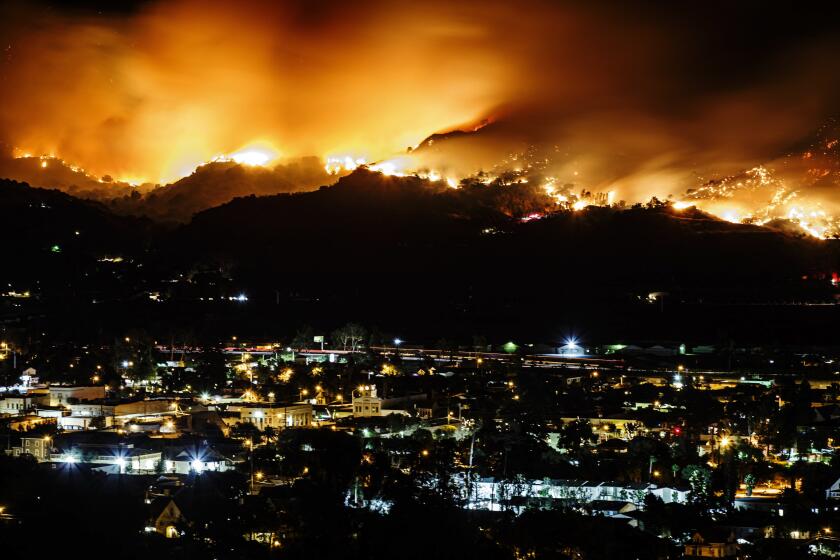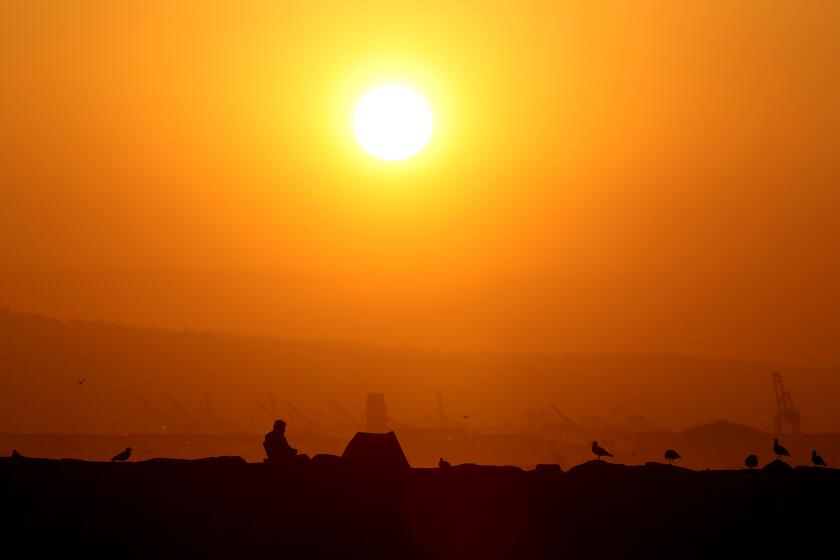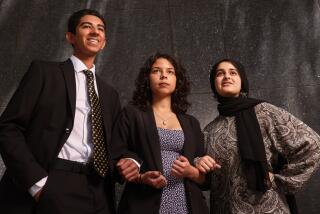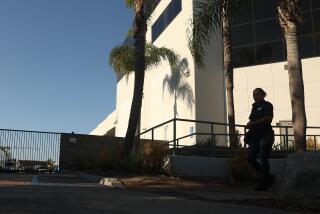Op-Ed: How historic redlining led to extreme heat in the Watts community

- Share via
Earlier this month, Sen. Joe Manchin III pulled the plug on President Biden’s climate agenda in Congress. Then last week, climate scientists urged the president to declare a climate emergency that could give him the power to take swift and meaningful action to reduce the country’s dependence on fossil fuels and the emission of greenhouse gases, even without Congress’ support. This unfolded while much of Europe and the United States endured record-breaking heat waves.
While the federal government must take serious action to cut greenhouse gas emissions, we also need to contend with the fact that we are already living with — and dying from — the catastrophic effects of climate change. We need immediate adaption strategies to address the unavoidable consequences of decades of already-emitted greenhouse gases. One of these consequences is extreme heat.
Since 2019, I’ve been studying how exposure to extreme heat and its effects is unequally distributed — what’s often described as thermal inequality. Thermal inequality disproportionately affects those who have already been harmed by other kinds of inequality. One is residential redlining, which in turn has been central in shaping thermal inequality.
In the 1930s, as Americans struggled through the Great Depression, the federal government established the Home Owners’ Loan Corp. to refinance the terms of loans for homeowners facing foreclosure. After completing this phase of its work, HOLC moved on to generate its infamous “residential security maps” of major cities across the United States. According to HOLC’s assessments, certain areas were deemed “hazardous,” as in too risky for investment, and were marked in red on these maps.
Urban areas with high concentrations of people of color, particularly Black people, tended to be redlined. For residents of these areas, it became difficult to get
access to financial resources, including mortgages, small-business loans, lines of credit and insurance coverage, from both public and private lenders.
Heat waves worsen power outages that put too many vulnerable people at health risk.
Decades of disinvestment have resulted in communities of color living in areas with more concrete and less green space than their white neighbors have, which means that these areas are far hotter as well. A prime example is the South Los Angeles neighborhood of Watts, where we have been interviewing residents about their experiences with heat.
The thermal inequality experienced by Watts residents, who are overwhelmingly Black and Latino, is built on a long history of other kinds of inequalities, including those exacerbated by redlining.
The heat in Watts is amplified by the built environment: pavement everywhere, a lack of shade and the use of building materials that absorb heat and slowly release it back into the environment. We heard from one Watts resident about her son fainting on a sweltering playground at school. In describing a bus stop, another resident noted that the “bench is out in the open, and the heat’s on it, so I don’t sit on it.” He added: “Let’s say you were to walk — you’d be walking around in the open, because there’s barely any trees.”
But it’s not just hot outside. The majority of Watts residents are low-income renters. During our interviews, we heard repeatedly about the lack of access to cooling technologies in people’s homes. One resident explained that she lived in Jordan Downs, a public housing complex originally built for workers during World War II, in a unit without air conditioning. Redevelopment efforts currently underway by the Housing Authority of the City of Los Angeles promise that new units will have air conditioning. Yet having an air conditioner in your home is not enough.
Many Watts residents who have air conditioners hesitate to use them, fearing the energy bills. Another Watts resident explained, “You live with it, when the things that you would use to combat the heat, you don’t have access to because of money.” Many residents rely heavily on fans, which are generally cheaper to purchase and operate but can actually increase heat stress when conditions are both hot and dry.
Significant investment to enhance community and health-system resilience can reduce the deaths associated with heat exposure.
President Biden’s executive actions promise to direct $2.3 billion in funding from the Federal Emergency Management Agency to help protect communities against the effects of climate change, including extreme heat. In addition, Biden has promised that “states will be able to use federal funds to pay for air conditioners in homes,” which includes both the devices and the energy needed to run them.
Although the use of air conditioning contributes to climate change, it’s a necessary compromise to ensure the health and survival of those most vulnerable to heat — and it doesn’t preclude other, potentially more sustainable forms of cooling, such as the provision of shade structures and tree canopy, the use of reflective paint on roofs or the installation of more energy-efficient heat pumps.
For this to happen, we need to ensure that state and local officials request and utilize these funds once they’re made available.
Biden’s executive actions provide an opportunity for cities like Los Angeles to invest in communities like Watts, to begin to redress the continuing legacy of redlining and, in the process, to turn down the temperature for those most vulnerable to the effects of extreme heat.
Bharat Jayram Venkat is the director of the UCLA Heat Lab. He is an assistant professor at UCLA’s Institute for Society and Genetics and in the department of history.
More to Read
A cure for the common opinion
Get thought-provoking perspectives with our weekly newsletter.
You may occasionally receive promotional content from the Los Angeles Times.












